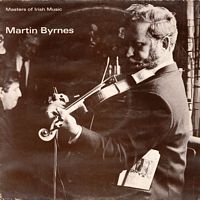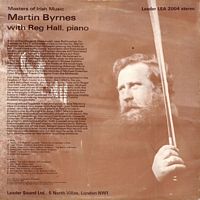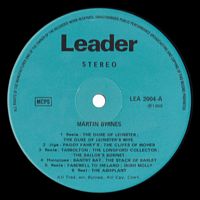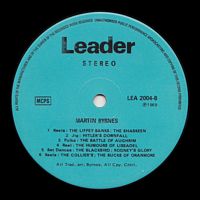
 |


 |
Sleeve Notes
Born in the village of Ahascragh, near Ballinasioe, Co. Galway in 1927, with little music in his family, Martin Byrnes was seven when he began playing the fiddle by ear. There were many fiddle, accordeon and flute players locally; country house and kitchen dances still flourished and each St. Stephen's Day the Wren Boys put their collection towards the Mummers' Ball. He listened to Johnny Doran, the legendary tinker piper at the annual horse fair and danced to the Aughrim Slopes Ceilidhe Band with Paddy Fahey on the fiddle at the local hops, Here indeed were idols within touching distance! More remote, but perhaps with more real impact and lasting effect on him were the fiddle records of Michael Coleman from Sligo and Frank O'Higgins from the Midlands.
His style matured with the wider experience gained in the heyday of Irish music in London — the 1950's. He ate, drank and slept music, playing round the pubs with Roger Sherlock, Joe Ryan, Willie Clancy, Tony Howley, Michael Gorman and scores of others. He stayed briefly with the resident band at the Galtymore, and was booked to play for a fortnight in Poland. The Swinford Fleadh took him home in 1961 and he stayed for four years playing mostly in Dublin and making occasional Radio and Telefis Eireann broadcasts.
Having played together in several pubs, it was Martin's idea to make a few tapes with Reg Hall — just fiddle and piano — and the session took place at Reg's house in Croydon one stuffy night in June 1967. Martin struck great form and characteristically played on till dawn. His choice of material on this record leans heavily towards Coleman, Gorman, Fahey and O'Higgins, yet he emerges as a highly distinctive stylist, with a sweet singing tone and tremendous lift and vitality; not particularly Galway in character but all his own. Recent years have brought a new following to Irish music and perhaps this record will help us to understand how for the new fans he, in his turn, has become an idol within touching distance.